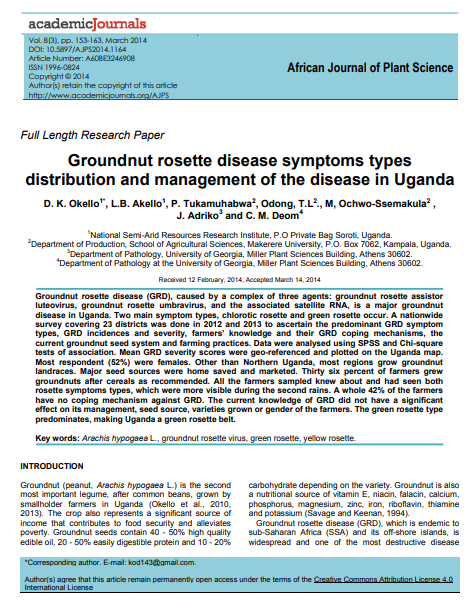Groundnut rosette disease symptoms, types, distribution and management of the disease in Uganda
Summary
Groundnut rosette disease (GRD), caused by a complex of three agents (groundnut rosette assistor luteovirus, groundnut rosette umbravirus, and the associated satellite RNA), is a major groundnut disease in Uganda. Two main symptom types, chlorotic rosette and green rosette, occur. A nationwide survey covering 23 districts was completed in 2012 and 2013 to ascertain the predominant GRD symptom types, GRD incidences and severity, farmers’ knowledge and their GRD coping mechanisms, the current groundnut seed system, and farming practices. Data were analyzed using SPSS and Chi-square tests of association. Mean GRD severity scores were geo-referenced and plotted on the map of Uganda. Most respondents (52%) were female. Other than Northern Uganda, most regions grow groundnut landraces. Major seed sources were saved at home and marketed. Thirty-six percent of farmers grew groundnuts after cereals as recommended. All the farmers sampled knew about and had seen both rosette symptom types, which were more visible during the second rains. Forty-two percent of the farmers have no coping mechanism against GRD. The current knowledge of GRD did not have a significant effect on its management, seed source, varieties grown, or gender of the farmers. The green rosette type predominates, making Uganda a green rosette belt.
Open resource Download resource Access resource on external site

